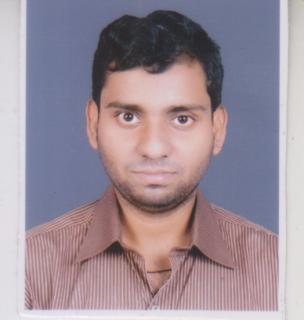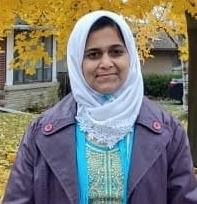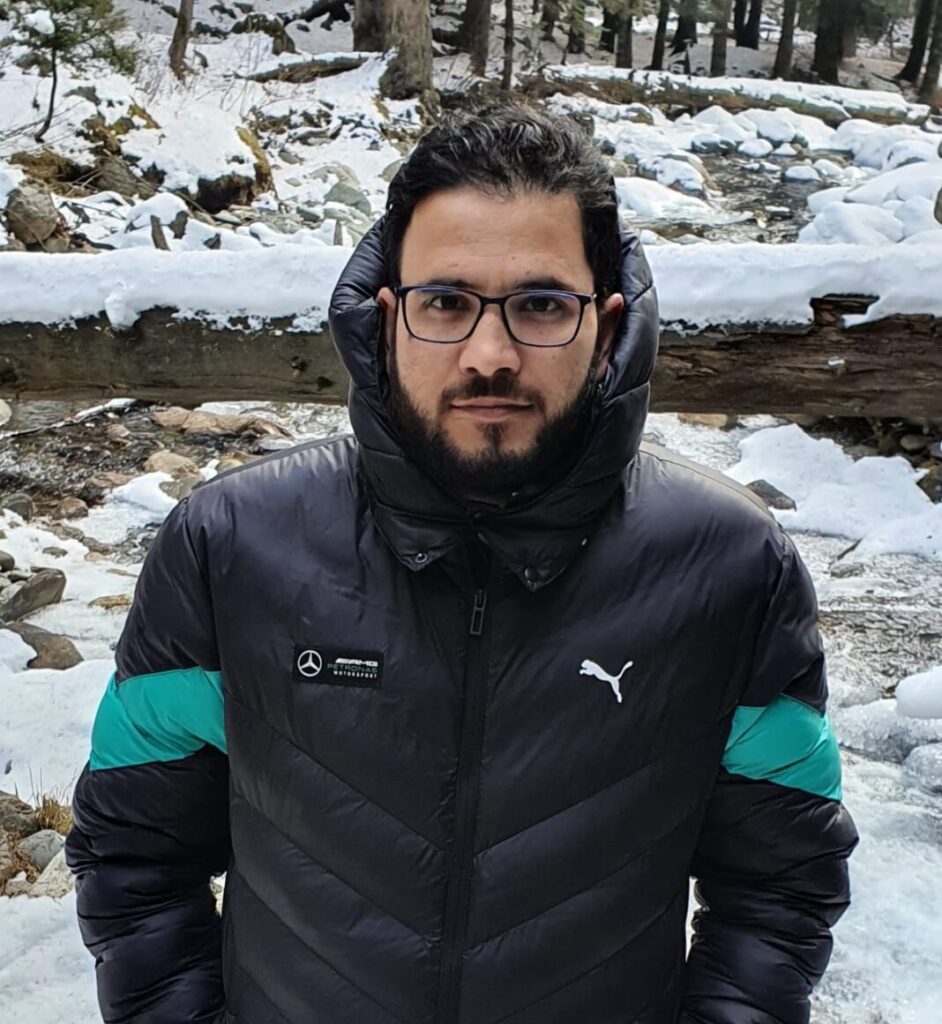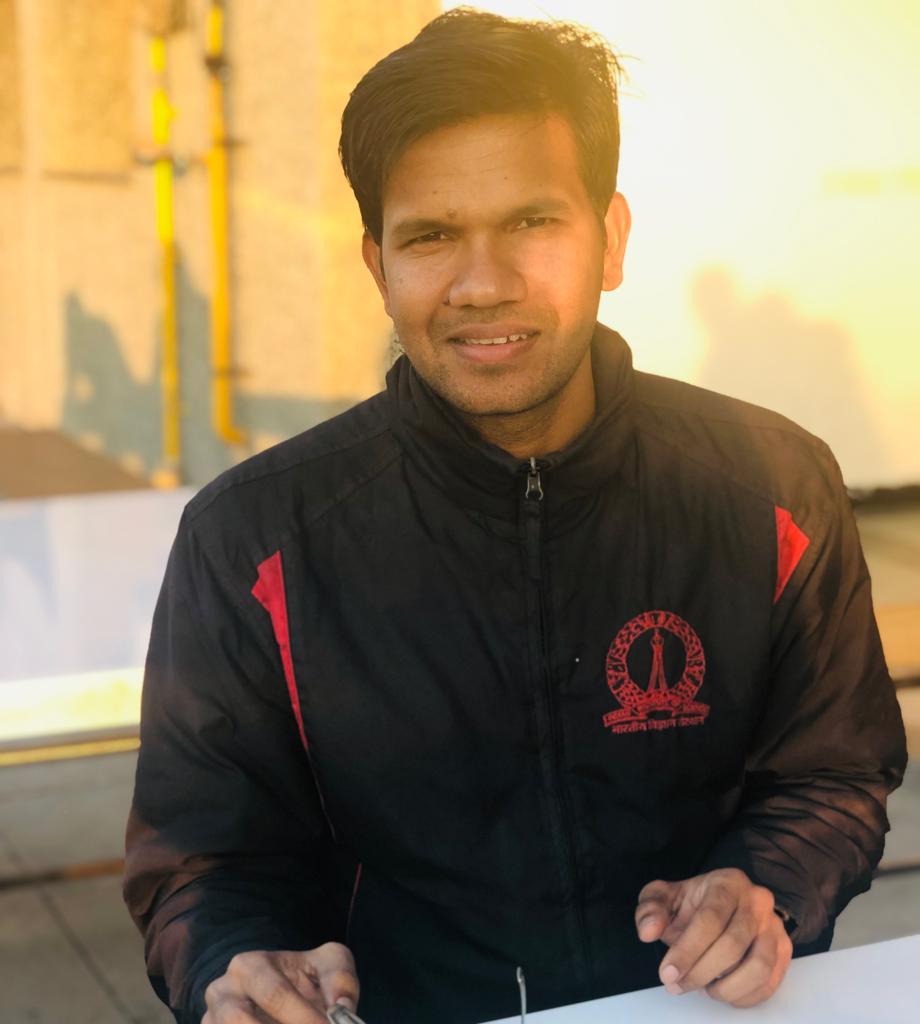INDIA / TAIWAN :

This is the third part of the series called “Scientist Says” where we bring for our readers the significant research works of young scientists.
Rashida Bakait from India Tomorrow interviews Dr. Mohammed Rameez who is presently working as Academia Sinica postdoctoral research fellow at the Institute of Chemistry, Academia Sinica, Taiwan.
Here are the excerpts of the interview with him.
Q. What is the topic of your research and please give a brief explanation?
Ans: With the increased manufacturing activities, large amount of carbon dioxide (CO2) is being released in the environment, causing Earth–Carbon disparity, leading to global warming issue. Further, there is an additional rising demand of fine chemicals such as p-benzoquinone, which are obtained from the processing of fossil fuels. However, these processes operate under high energy and high pressure conditions generating more CO2. Therefore, decreasing CO2 production and transforming CO2 into valuable solar fuels seem to be an essential issue to be considered for future sustainable development. So, this scenario has given the researchers a challenging topic of as to how to reduce the amount of CO2 and further convert it into useful low-carbon fuels. Hence, my research topic is based on reduction of carbon dioxide to other useful chemicals using electricity and catalysts. This process is known as electroreduction of CO2.
My research is developing an ideal resource-efficient solution based on catalysts i.e. artificial photosynthesis – mimicking how plants use sustainable sources of sunlight, CO2 and water to drive the production of energy-rich carbohydrates. As such, promising research efforts have been intensified in reducing CO2 to similar energy-rich fuels and chemical feedstocks through electro-catalytic routes. Recently, we report a novel g-C3N4/Cu2O-FeOheterogeneous nanocomposite catalyst for CO2 electrochemical reduction to CO, with a maximum Faradaic efficiency of 84.4% at a low onset overpotential. This research was published in topmost journal in the field of environmental engineering. This research was done in Academia Sinica, a premier research institute of Taiwan. A PhD student Girma from Ethiopia and I worked on it in Prof. Hung’s lab. I was also one of the corresponding authors.
Q. What is the motive/ aim of your research?
Ans: Different semiconducting materials and metals, such as Pt, Pd, TiO2, SrTiO3 CdS, g-C3N4, ZnO, Bi2WO6 and so on have been used as catalyst for CO2 reduction. However, the practical applications of these catalysts for CO2 reduction are still limited by the low CO2 conversion efficiency due to low light harvesting efficiency, high production cost, low catalytic activity, insufficient catalyst durability and a lack of mechanistic understanding.
Hence, our aim was integrating heterostructures containing oxides of non-noble metals, such as iron and copper with g-C3N4 that may result in stable materials that could function as active electrochemical catalysts for CO2 reduction.
Q. What important findings/aspects are highlighted in your research?
Ans: We prepared a novel g-C3N4/Cu2O-FeO heterostructure nanocomposite catalyst by a simple hydrothermal synthetic route and tested it for electrochemical CO2 reduction in aqueous systems. To the best of our knowledge, this is the first experimental report on a hybrid g-C3N4/Cu2O-FeO nanocomposite for electrochemical CO2 reduction. We demonstrated that g-C3N4/Cu2O-FeO is a promising electrocatalysts for CO2 reduction in neutral medium. Incorporating mixed metal oxide into g-C3N4 layers could be a potential strategy to improve the electrocatalytic catalytic activity of the composite materials. With careful experimental design, this research may help us obtain a library of highly efficient water stable and less toxic catalysts optimal for various catalytic applications.
Q. What kind of challenges did you face?
Ans: Many semiconductors, doped and sensitized semiconductors have been used as photocatalysts for CO2 reduction for higher conversion efficiency. The selectivity of products not only depends on the catalysts’ compositions but also on the choice of reductant and the solvent. However, the practical applications of these catalyst for CO2 reduction are still limited by the low CO2 conversion efficiency. It is important to raise the photocatalytic conversion efficiency and long-term stability to make this process economically feasible. Here, our main challenge was to enhance the selectivity and efficiency of the process for the novel g-C3N4/Cu2O-FeO catalyst, which uses earth abundant materials.
Q. Any scholarships or awards for this research?
Ans: We got financial support from Ministry of Science and Technology of Taiwan (109-2113-M-001-020) and Academia Sinica (AS-KPQ-106-DDPP) for this research on CO2 reduction.
I have received Taiwan government’s most prestigious scholarship for PhD ‘TIGP’ and was given an opportunity to study and carry out my research in the Academia Sinica and National Chiao Tung University, a renowned research institution of Taiwan and one of the top three Universities. It was a type of dual degree with my research focused on Sustainable Chemical Science and Technology. After obtaining PhD, I also got Song Pei Wu applied chemistry thesis award for my thesis on Perovskite solar cells. Moreover, two of my research papers also received the best paper award from my university ‘National Chiao Tung University’.
Currently, I have been awarded the most prestigious postdoctoral fellowship in Taiwan (Academia Sinica postdoctoral research fellow) offered by Academia Sinica and I am working as a Postdoctoral research scholar here.
Q. How do you think your research would be beneficial to the society or industry?
Ans. I hope that this research would help in solving the prevalent issue of global warming befalling due to the rapid industrial developments across the globe. Currently, the conversion efficiency is too low to be practically useful in industry, this research would definitely help solving the existing low conversion efficiency. We are also confident that the proposed hybrid low-dimensional functional materials would help in promoting the conversion of the product yields to some extents and to gain in-depth understanding of the basic principle of CO2 reduction using the advanced spectroscopy/dynamics techniques available in our laboratory. Based on our results we will be able to design better, cheaper and inexpensive catalysts. Finally, we hope these catalysts can be used for a large-scale industrial fixation of carbon dioxide to useful chemicals. This can help us achieve two goals – 1) CO2 amount reduction and 2) valuable chemical productions without using fossil fuel. Ultimately, we will be able to attain the goal of sustainable development.
Q. When did you begin and complete your research?
Ans: I joined the above mentioned project in the month of June 2020, after finishing my PhD, and the first draft of the manuscript was ready by the end of November 2020. The research was finally published in the reputed journal named Applied Catalysis B: Environmental inthe field of environmental engineering in the month of March 2021.
Q. Any new research you are working on now?
Ans: The recent research still requires solutions like finding a viable approach, providing better stability, reducing toxicity and superior catalytic performance. Currently we are working on introducing newer class of materials known as Perovskite. Our goal in this proposal is to develop novel photocatalysts that are inexpensive and efficient. Additionally, the photocatalytic materials should be able to generate large number of electron-hole pairs, while separating charges efficiently at the same time, and providing large amount of active catalytic sites at the interface between the surface of the photocatalyst and the CO2 carriers (either in liquid phase or in gas phase).
Q. What was the conclusion of your research?
Ans. We successfully demonstrated that cheaper catalyst can also work efficiently as expensive catalysts for CO2 reduction with better efficiency and selectivity. More details can be found in our research article.
Q. How do you think your research can be carried forward?
Ans. We expect to establish a standard protocol for employing catalysts for efficient Electro Chemical systems which may ultimately lead to development of the large-scale integrated reactor, including highly efficient buffered system, high conductivity membrane material, and large surface area electrode (e.g. gas diffusion electrode, single-atom membrane, and bio-conductive membrane electrodes). Further, we will be able to tune the selectivity of products by tuning the solvents. Ultimately, research groups around the world will be able to harness CO2 for various applications.
Q. Lastly, please give some tips to the budding scientists?
Ans. My advice to the budding scientists is that they should keep themselves updated with the recent literature and findings. Never lose hope as it takes time to obtain results. Always have plan B and C ready for the research and experiments.
source: http://www.indiatomorrow.net / India Tomorrow / Home> Education> Featured / by Rashida Bakait, India Tomorrow / March 30th, 2021











